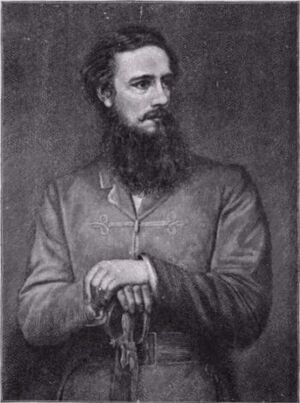John Nicholson facts for kids
John Nicholson (born in 1822, died in 1857) was a British officer. He worked for the East India Company, a powerful British trading company that also ruled parts of India a long time ago. Nicholson is famous for his role in the Indian Mutiny of 1857. He is often called the 'Saviour of Delhi' because he helped the British during this important event. He died in Delhi in September 1857.
Contents
Who Was John Nicholson?
John Nicholson was a Brigadier-General, which is a high rank in the army. He was known for being a very strict and honest leader. He always worked hard to stop crime and dishonesty wherever he was stationed.
His Time in India
Nicholson spent much of his career in British India. This was a time when Britain ruled over a large part of India. He was an administrator, meaning he helped manage and govern areas for the British.
The Indian Rebellion of 1857
In 1857, a major uprising happened in India. It is known as the Indian Rebellion of 1857 or the Indian Mutiny. Many Indians fought against British rule. John Nicholson played a key role for the British during this rebellion. He was involved in important battles around Delhi.
He was seen as a hero by the British. They believed he helped save their control over India. Sadly, he was injured during the fighting in Delhi and died in September 1857.
The Nikal Saynis
Because of his strong personality and strict rules, some Indian people actually started to worship John Nicholson. They saw him almost like a god. These people were called Nikal Saynis. This shows how much of an impact he had on the local population.
Nicholson's Legacy
John Nicholson was buried near Delhi after he died. However, there is a special monument built in his honor far away.
The Nicholson Memorial
The Nicholson Memorial is a famous monument. It is also known as Nicholson's Obelisk, which is a tall, narrow stone pillar. This memorial is located near Taxila in Pakistan. It was built by the British people who ruled India at the time. They built it there because Nicholson had spent a lot of time in that area during his life. It stands as a reminder of his time and influence.
Related pages


